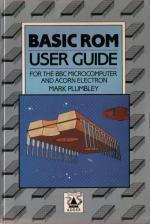Other Reviews Of Basic ROM User Guide For The BBC/Electron
Basic ROM User Guide (Acornsoft/Adder)
A review by John Woollard (Electron User)
Basic ROM User Guide (Acornsoft/Adder)/The Advanced Basic ROM User Guide (Cambridge Microcomputer Centre)
Two for the ROM road


 1st June 1985
1st June 1985
